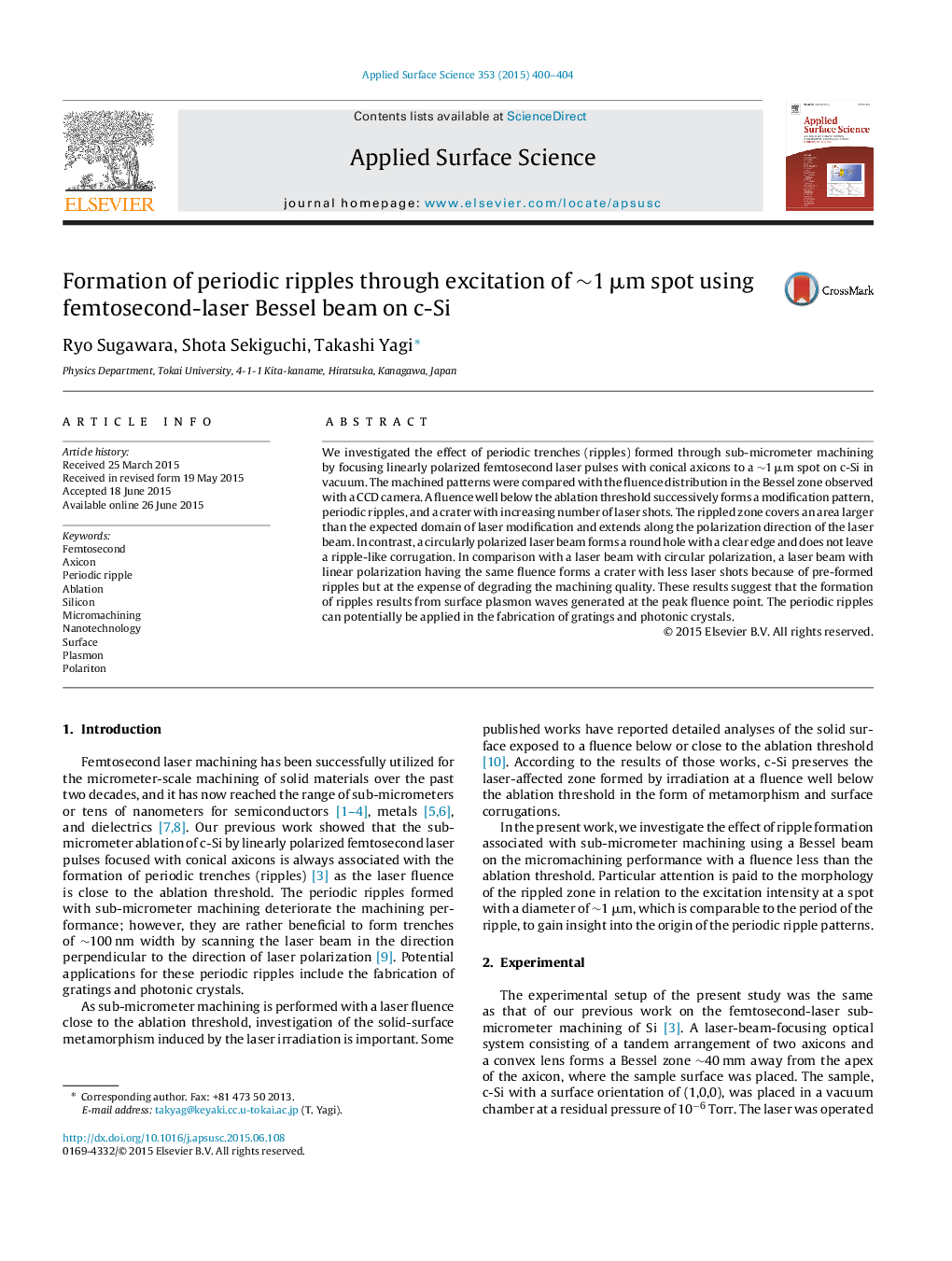| Article ID | Journal | Published Year | Pages | File Type |
|---|---|---|---|---|
| 5356577 | Applied Surface Science | 2015 | 5 Pages |
Abstract
We investigated the effect of periodic trenches (ripples) formed through sub-micrometer machining by focusing linearly polarized femtosecond laser pulses with conical axicons to a â¼1 μm spot on c-Si in vacuum. The machined patterns were compared with the fluence distribution in the Bessel zone observed with a CCD camera. A fluence well below the ablation threshold successively forms a modification pattern, periodic ripples, and a crater with increasing number of laser shots. The rippled zone covers an area larger than the expected domain of laser modification and extends along the polarization direction of the laser beam. In contrast, a circularly polarized laser beam forms a round hole with a clear edge and does not leave a ripple-like corrugation. In comparison with a laser beam with circular polarization, a laser beam with linear polarization having the same fluence forms a crater with less laser shots because of pre-formed ripples but at the expense of degrading the machining quality. These results suggest that the formation of ripples results from surface plasmon waves generated at the peak fluence point. The periodic ripples can potentially be applied in the fabrication of gratings and photonic crystals.
Related Topics
Physical Sciences and Engineering
Chemistry
Physical and Theoretical Chemistry
Authors
Ryo Sugawara, Shota Sekiguchi, Takashi Yagi,
